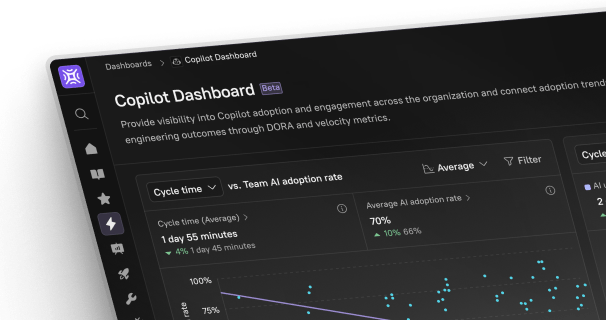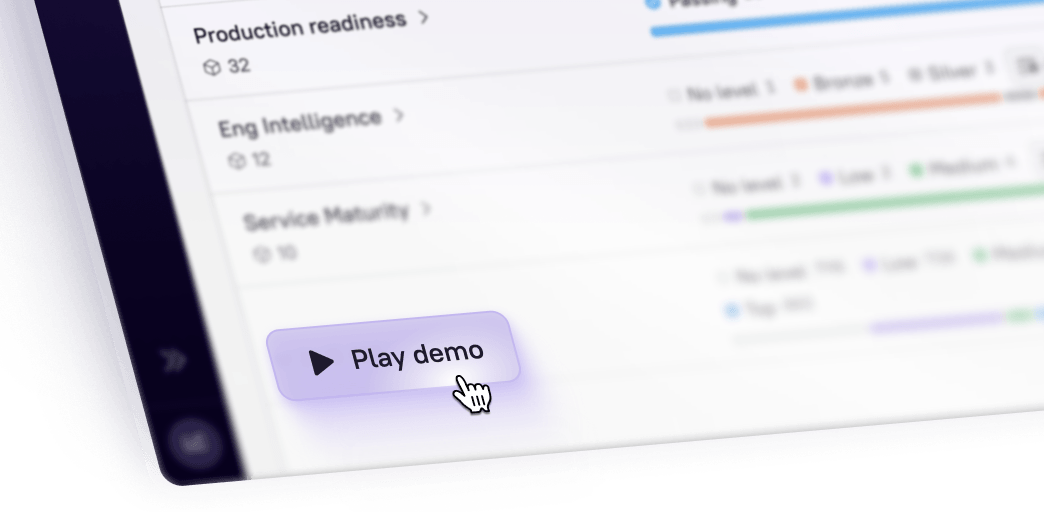Infrastructure as code (IaC) tools enable the automation of cloud infrastructure and IT infrastructure deployment and management. These configuration management tools allow DevOps teams and development teams to define computing infrastructure resources as code in configuration files, use version control systems like GitHub, and deploy infrastructure consistently across different environments, from on-premises data centers to cloud services. The adoption of IaC tools is growing within enterprises as they seek to improve consistency, reduce human error, optimize resources, and enable faster, more reliable application deployments.
This article will explore the top IaC tools in 2024, including Terraform, Pulumi, Crossplane, Ansible, Chef, Puppet, SaltStack, AWS CloudFormation, Azure Resource Manager, and Google Cloud Deployment Manager. We’ll examine the key features, pros and cons, and ideal use cases for each tool, to help organizations looking to enhance their software production readiness and infrastructure automation through the adoption of IaC tools.
What are infrastructure as code tools?
In today's rapidly evolving software development landscape, engineering leaders face significant challenges in managing quickly changing infrastructure state configurations and maintaining production readiness. The 2024 Cortex State of Software Production Readiness survey reveals that more than 30% of respondents struggle with continuous checks, such as code coverage and enforcing SLOs. Furthermore, 28% of respondents emphasize the need for orchestration and automation in provisioning infrastructure, deployment processes, and monitoring setups to guarantee smooth and reliable production releases.
To address these challenges and combat configuration drift, many organizations are turning to IaC tools, which enable the management and provisioning of computing infrastructure using source code, rather than error-prone and time-consuming manual processes. When used together with an internal developer portal (IDP), IaC tools can help engineering teams to streamline workflows, automate critical processes across the infrastructure lifecycle, and maintain production readiness.
Best infrastructure as code tools in 2024
When choosing an IaC tool, you’ll want to consider the best tools for your team sizes, use cases, and cloud platform preferences. From open-source solutions like Terraform by Hashicorp and Pulumi to cloud-native tools such as AWS CloudFormation, Azure Resource Manager, and Google Cloud Deployment Manager, each tool offers unique features and benefits to streamline infrastructure management and automation for virtual machines, load balancers, and more. The following are considered the best IaC tools in 2024:
Terraform
Terraform by HashiCorp is a widely adopted IaC tool known for its multi-cloud support, modular and reusable code, and state management capabilities. Its large community and extensive ecosystem make it a robust choice for many organizations. Terraform supports a wide range of providers, making it suitable for teams working with multiple cloud platforms. However, it has a steep learning curve for beginners and may not be the best fit for complex workflows. Terraform is ideal for medium- and large-sized teams looking to manage infrastructure across multiple cloud providers and ensure consistent deployments.
Pulumi
Pulumi stands out among IaC tools for its multi-language support, allowing developers to use familiar programming languages like JavaScript, TypeScript, Python, and Go. It integrates well with existing development tools and provides real-time previews of infrastructure changes. Pulumi has strong support for Kubernetes, making it a good choice for teams heavily invested in containerization. However, compared to Terraform, its community is smaller, and it has limited support for some cloud providers. Pulumi is best suited for teams with a strong developer focus and those prioritizing Kubernetes deployments.
Ansible
Ansible is a simple and easy-to-use agentless IaC tool that uses YAML syntax to define infrastructure and orchestrate configurations. One of its key features is playbooks, which are essentially a set of instructions or tasks that Ansible can execute on managed nodes. Playbooks are written in a human-readable format, making them accessible to both developers and operations teams. They can be used to define the desired state of the infrastructure, including provisioning resources, configuring applications, and managing deployments. Ansible has a large community and an extensive module library, enabling users to manage a wide range of infrastructure resources. However, it may not be the best choice for complex deployments or advanced automation scenarios. Ansible is well-suited for small and medium-sized teams looking for a simple, agentless solution to manage their infrastructure.
Chef
Chef is a developer-centric IaC tool, using a Ruby-based DSL for defining infrastructure. It has a strong focus on configuration management and provides a large set of features for managing large-scale infrastructures. Chef's key features include a powerful dependency management system, automatic node discovery, and a comprehensive testing framework. However, its learning curve can be steep for those unfamiliar with Ruby, and it may have a higher resource overhead compared to other IaC tools. Chef is best suited for large enterprises with complex infrastructure requirements and teams with strong development skills.
Puppet
Puppet is another well-established IaC tool that uses a declarative language called Puppet Code for defining infrastructure. Puppet's key features include a powerful abstraction layer, built-in reporting and monitoring, and a large module ecosystem. However, its learning curve can be steep, and it may have a higher resource overhead compared to some other IaC tools. Puppet is best suited for large enterprises with complex infrastructure requirements and teams looking for a mature, feature-rich solution.
SaltStack
SaltStack is an IaC tool that focuses on simplicity, flexibility, and scalability. It uses a declarative YAML syntax for defining infrastructure and provides a powerful remote execution engine for managing large-scale deployments. SaltStack's key features include event-driven automation, built-in security and compliance features, and support for a wide range of operating systems and cloud providers. However, its learning curve may be steeper compared to some other IaC tools, and it may require more setup and configuration. SaltStack is best suited for large-scale deployments and teams looking for a flexible, scalable solution with strong security and compliance features.
AWS CloudFormation
AWS CloudFormation is an IaC tool specifically designed for managing infrastructure on the Amazon Web Services (AWS) platform. It uses JSON or YAML templates to define and provision AWS cloud resources, enabling users to create, update, and delete resources in a consistent and repeatable manner. CloudFormation's key features include built-in resource management, rollback capabilities, and integration with other AWS services. However, it is limited to the AWS ecosystem, so it is best suited for teams primarily working with AWS resources and those looking for a native IaC solution within the AWS platform.
Azure Resource Manager
Azure Resource Manager is Microsoft's native IaC tool for managing infrastructure on the Microsoft Azure cloud platform. It uses JSON templates to define and deploy Azure resources, providing a consistent and repeatable approach to infrastructure management. Azure Resource Manager's key features include resource grouping, role-based access control (RBAC), and integration with other Azure services. However, like AWS CloudFormation, it is limited to the Azure ecosystem. Azure Resource Manager is best suited for teams primarily working with Azure resources and those looking for a native IaC solution within the Azure platform.
Google Cloud Deployment Manager
Google Cloud Deployment Manager is an IaC tool specifically designed for managing infrastructure on the Google Cloud Platform (GCP). It uses YAML or Python templates to define and deploy GCP resources, enabling users to create, update, and delete resources consistently and predictably. Deployment Manager's key features include support for complex deployments, preview and dry-run capabilities, and integration with other GCP services. However, it is limited to the GCP ecosystem and may not be suitable for multi-cloud or hybrid cloud environments. Google Cloud Deployment Manager is best suited for teams primarily working with GCP resources and those looking for a native IaC solution within the GCP platform.
How Internal Developer Portals extend IaC tools
While IaC tools offer numerous benefits, organizations may face challenges when adopting and integrating them into their existing workflows and continuous integration processes. One common challenge is the learning curve associated with new tools and languages, which can slow down adoption and lead to inconsistencies in implementation. Another challenge is the lack of centralized governance and access control, making it difficult for teams to discover, share, and reuse IaC components effectively. Moreover, as organizations scale their infrastructure and adopt multiple IaC tools, managing the growing complexity and ensuring standardization across projects can become increasingly difficult.
This is where IDPs like Cortex come into play. IDPs provide a centralized platform that helps organize and streamline access to IaC tools, making them more accessible to teams across the organization.
The Cortex Catalog makes it easy for teams to discover and access infrastructure services and components, while the Scaffolder enables the creation of project templates that include IaC tools for greater consistency and faster deployments. Cortex Workflows can further enhance this by chaining together multiple actions to help centralize and automate infrastructure provisioning. Additionally, Scorecards within Cortex allow teams to track progress on key engineering metrics as they roll out IaC tools, providing insights into how these tools affect workflows.
By integrating IaC tools with an IDP like Cortex, engineering teams can more effectively maintain production readiness, even as desired state configurations change over time. This combination of tools enables faster, more consistent deployments and helps teams stay aligned with best practices.
In summary, IaC tools are essential for organizations looking to automate and streamline their infrastructure management processes. By evaluating the top IaC tools and integrating them with an IDP, teams can improve consistency, reduce configuration drift, and enable faster, more reliable application deployments in their continuous delivery pipelines.
For more information on how Cortex’s Internal Developer Portal can complement your IaC initiatives, connect with us for a personalized demonstration.





